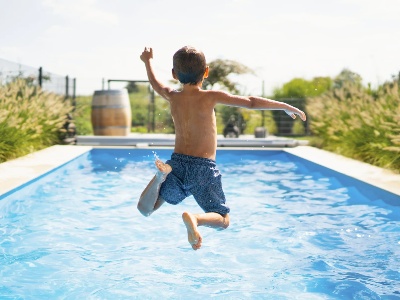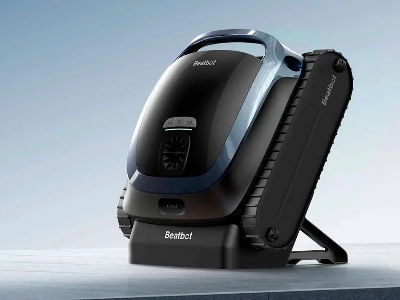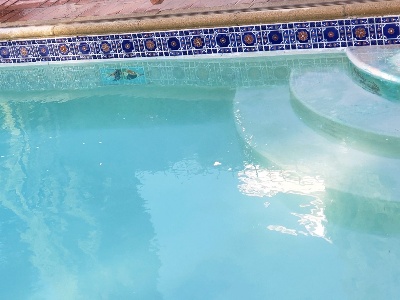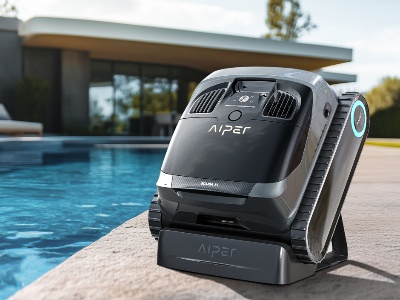Saltwater pools are attracting more and more private individuals thanks to their simplified maintenance, their gentleness to the skin and the reduction of chemicals. Contrary to popular belief, a saltwater pool is not maintenance-free: it requires precise actions to keep the water healthy, a high-performance electrolyser and a good chemical balance. In this comprehensive guide, discover the essential steps for effectively maintaining your saltwater pool, the equipment to favour, the settings not to be neglected, and why a good robot cleaner like the BEATBOT AquaSense 2 Pro can make all the difference in your routine.
Understanding how a saltwater pool works
A saltwater pool does not work with conventional chlorine added manually, but thanks to an electrolyser. This device transforms the salt in the water into natural chlorine through an electrochemical process. The water generally contains between 4 and 5 grams of salt per litre, a concentration much lower than that of the sea, but sufficient for effective disinfection. This system generates a milder chlorine, odourless and less irritating to the eyes and skin, making it very popular in households with children. However, for everything to work perfectly, it is essential to regularly monitor certain parameters, such as the salt level, the pH and the level of free chlorine generated. Because even natural chlorine production must be perfectly controlled to avoid any imbalance. To keep salt water clear and healthy, three parameters must be checked every week: salt level, pH and chlorine production. The optimum salt level is between 4,000 and 5,000 ppm, according to the recommendations of the electrolysis system manufacturer. If it is too low, the cell will no longer produce chlorine; if it is too high, it could damage certain equipment. The pH, meanwhile, must remain stable between 7.2 and 7.4, because a pH that is too high reduces the effectiveness of the chlorine generated. Finally, the level of free chlorine must be measured to ensure that disinfection is sufficient, especially in hot weather or after intensive swimming. It is strongly recommended that you use an automatic pH regulator to maintain stability and avoid variations that tire out the electrolyser.
Clean the bottom, sides and surface regularly
Salt does not prevent leaves, insects or dust from invading your pool. Regular cleaning is essential to maintain optimal water quality. Brushing the sides and bottom every week prevents the formation of algae and deposits. To automate this task, a wireless robot such as the
BEATBOT AquaSense 2 Ultra is the ideal ally. It ensures complete cleaning, even on fragile surfaces, while being compatible with the saline environment. In addition, a smart skimmer such as the
BEATBOT iSkim Ultra allows you to continuously capture floating waste. This combination reduces the load on the filter and visibly improves the clarity of the water, by acting at all levels.
Maintaining and cleaning the chlorinator
The chlorinator is the heart of the disinfection system. Its cell, in permanent contact with salt water, can become encrusted with limescale or wear out prematurely if it is not properly maintained. It is recommended that you check it every 4 to 6 weeks, especially in the high season. Cleaning with diluted acid is sometimes necessary if a limescale deposit has formed. Some models have a 'self-cleaning' function by polarity inversion, which limits the need for this. Also check that the cell does not show signs of advanced corrosion or visible damage. Good maintenance extends the life of the chlorinator, reduces maintenance costs and guarantees continuous and stable chlorine production. This is an often-neglected point, yet essential to the good health of your pool.
Adapting filtration to salt water
Filtration remains essential, even with an automatic treatment system. Good water circulation distributes the chlorine generated and prevents stagnant areas. Your pump should run for at least 8 to 12 hours a day in summer, depending on the water temperature (simple rule: filtration time = temperature/2). Remember to clean the skimmer baskets and the pump pre-filter regularly. The main filter (sand, cartridge or diatom) must also be maintained to remain effective. Poorly filtered salt water remains vulnerable to algae growth, especially in hot weather. Stirring is therefore an essential complement to electrolysis treatment, not a secondary element. To optimise clarity, a cleaning robot like those from BEATBOT can relieve your filter by capturing some of the debris in its own integrated tank.
The right steps to take all year round
Maintaining a saltwater pool requires rigour, but quickly becomes routine. Remember to cover the pool at night or during a prolonged absence, to limit chlorine evaporation and dirt. Check the electrolysis cell at the beginning and end of the season, adjust the filtration time according to the weather, and monitor the chemical parameters at least once a week. A good robot cleaner, combined with a high-performance skimmer, helps to keep a pool clean without the need for frequent manual intervention. When it comes to winterising, opt for passive winterising (partial draining and stopping the electrolyser) or active winterising (maintaining filtration and protecting the cell) depending on the region. The objective is simple: preserve the quality of the water, protect the equipment and make it easy to start up again in the summer.
Easy maintenance for long-lasting pleasure
With the right approach, a saltwater pool offers unrivalled ease of use: less odour, soft water and continuous disinfection. By choosing a high-performance chlorinator, maintaining effective filtration and automating cleaning with robots such as the
AquaSense 2 Ultra, you limit human intervention while improving water quality. Maintaining a saltwater pool is no more complex, it is simply different. It requires regularity and a little technology, but the return on comfort is immediate. By investing in the right equipment and adopting a suitable routine, you can enjoy a pool that is always ready, healthier and more enjoyable... day after day.







